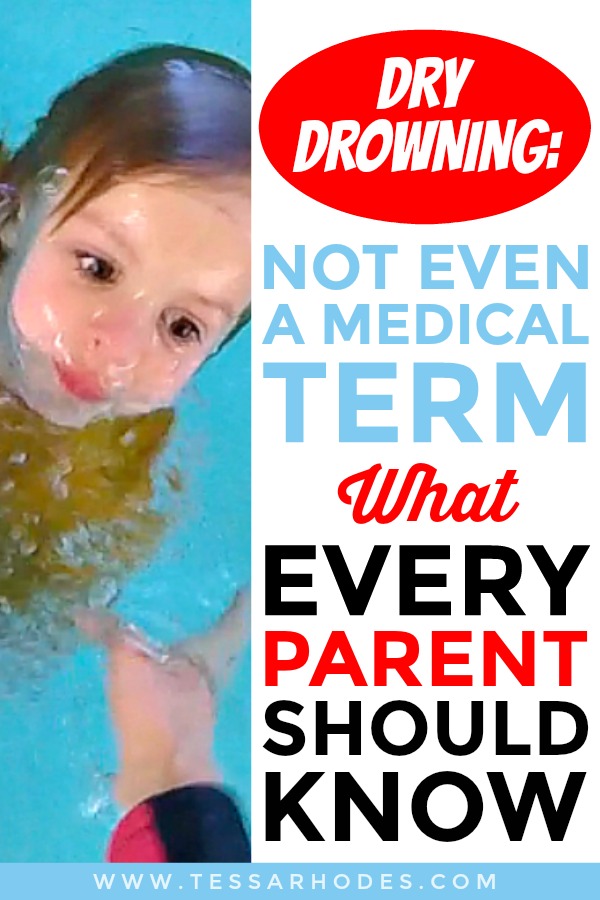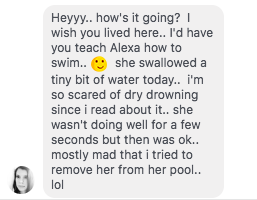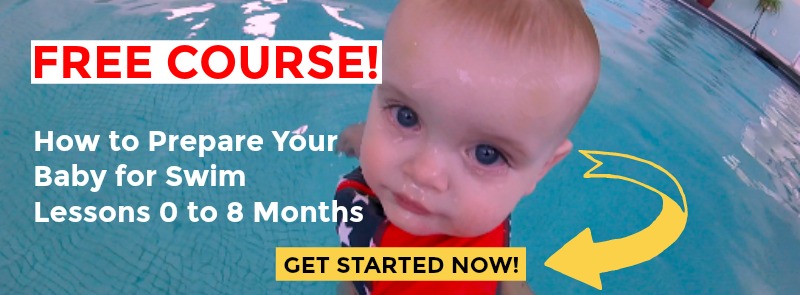Dry Drowning Real or Fake
Summer has just begun! Well at least here in the northern hemisphere. Winter has just begun for you southern hemispherians. Happy beginning of a new season everyone!
We northern hemispherians are getting ready once again to take the plunge and cool off in some sort of body of water. But be sure to keep an eye on your kids. We don’t want any accidents happening. Like dry drowning. Do we really have to worry about dry drowning? No, we don’t.

Dry Drowning Real or Fake?
My friend, Deb messaged me the other day because she was concerned about dry drowning. Here’s what she wrote:

I’m sure you’ve read the same stories that Deb read. It’s been so blown out of proportion, that now we believe that anytime a child inhales a little bit of water that it’s life-threatening. It’s not the case. Here are the facts:
Dry drowning and secondary drowning which is also sometimes referred to as delayed drowning is extremely rare and when you know the signs, entirely treatable.
Another thing you should know about dry drowning is that it is not an accepted medical condition. Neither is near-drowning or secondary drowning. Most medical providers heard about dry drowning for the first time on social media.
I don’t want to make this any more confusing than it needs to be, so I’m still going to use the terms dry and secondary drowning since that’s what we’re used to calling it.
So what is dry drowning other than an unaccepted medical condition?
It’s when water is inhaled (but the fluid never reaches the lungs, hence the term “dry” drowning) and then it triggers a spasm in the airway, causing it to close up and impact breathing.
Monitor your child for the following symptoms, which typically occur within an hour of inhaling water:
- difficulty breathing or speaking
- irritability or unusual behavior
- coughing dry drowning real or fake
- chest pain
- low energy or sleepiness after a water incident
If your child is exhibiting the above signs, call 911 or go to the ER immediately.
Secondary or delayed drowning, as it has been called…
is when swimmers have taken water into their lungs. The water builds up over time, eventually causing breathing difficulties.
The symptoms which will persist for hours after inhaling water are:
- difficulty breathing or speaking
- irritability or unusual behavior
- coughing
- chest pain dry drowning real or fake
- extreme tiredness
- vomiting
- blue lips or pale skin
Just like dry drowning, treat it as a medical emergency and seek help immediately.
However, remember, dry and secondary drowning is very rare.
So if your child inhales water and then coughs uncontrollably for a moment and then stops, they’re fine. It’s only if the coughing persists that you should be concerned.
You may have read some stories about children who didn’t show any signs of dry or secondary drowning (other than a brief coughing fit) after an incident at the pool and then went to bed that night and never woke up.
To say that they didn’t show any signs is a misconception as stressed in this article.
And in case that wasn’t enough to put your mind at ease…
“There has never been a case published in the medical literature of a patient who received a clinical assessment, was initially without symptoms, and who later deteriorated and died. People who have drowned and have minimal symptoms will either get better or worse within two to three hours.” Dr. Seth Hawkins, MD
To prevent any drowning of any kind, whether it’s dry, secondary, delayed or actual drowning, do the following:
- When you swim with your child, stay within arms reach.
- Fence in your pool, spa, and landscape water features.
- Always swim in a lifeguarded area.
- Learn swimming and water safety survival skills.
- Provide close and constant attention to children you are supervising in or near water.
- Children, inexperienced swimmers, and boaters should wear U.S. Coast Guard-approved life jackets.
- Also, know what to do in an emergency. If a child is missing, check the water first.
- And know when to call 911 and have easy access to reaching or throwing equipment, a cell phone, life jackets and a first aid kit.
I hope you feel better about the whole dry/secondary drowning thang. Because it is so very rare. I have never known a single person who has experienced or succumbed to dry or secondary drowning. I also don’t know anyone who knows anyone.
We’ve all inhaled water when we’ve been swimming, and if you’re reading this, then you survived.
What about when you accidentally inhale water when just drinking it. I wonder if anyone has ever drowned from that. I doubt it.
Speaking of water. All this talk of it has made me thirsty. So I’m going to sign off now and pour myself a glass of water. Hope I can handle it. Fingers crossed.
Love the water but fence it in,
Tessa dry drowning real or fake
P.S. Get the FREE water safety app to help ensure your family stays safe in, on and around the water. It includes kid-friendly videos and quizzes. Search the iTunes app store for Swim by American Red Cross or click here. For Google Play you can use the same search parameters or click here. It provides the latest in water safety guidance to help ensure your family stays safe in, on and around the water.
P.P.S. To start your child on the path to becoming water safe, click here.


Leave a Reply